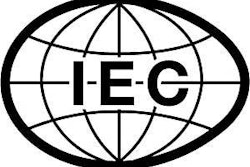In 2012, global meat production is projected to expand by nearly 2 percent to 302 million metric tons, according to estimates from the Food and Agriculture Organization of the United Nations. This growth will be driven by gains in pig meat production and poultry production, which for the first time in history exceeded 100 million metric tons, reaching a record 101.6 million metric tons in 2011, according to FAO. Overall, the meat market’s growth will depend on feed prices and animal diseases. Much growth will come from developing countries in 2012, while developed countries may see a second year of lower output and profitability with stagnating domestic meat consumption, high input costs and competition from developing countries.
Poultry meat production and consumption
Global poultry production is expected to increase 1.8 percent by the end of 2012 to a projected 103.5 million metric tons. Much of the growth in poultry production will come from Asia, specifically, China, India, Japan, the Republic of Korea and Turkey. Production of broiler meat in India is expected to reach a record 3.2 million metric tons in 2012 thanks to vertical integration among producers and an expanding middle-class population, according to estimates from the Foreign Agricultural Service/U.S. Department of Agriculture. However, with a record seven Asian countries reporting outbreaks of Avian influenza in February 2012, production growth in this region will depend on these poultry health concerns for the remainder of the year.
Global broiler meat production growth will remain suppressed and profitability will be a concern for producers also facing high feed prices and trade disputes. Projections completed in April 2012 by the Foreign Agricultural Service/USDA for broiler meat production in Brazil, the United States and China were all lowered from earlier projections to 13.3 million tons, 16.4 million tons and 13.7 million tons, respectively. Globally, broiler meat production was revised downward by 881,000 from previous forecasts to 82.2 million tons.
Despite trade disputes, poultry meat trade is still forecast to rise by 3 percent to 13 million metric tons in 2012. World poultry import growth will be led by countries in the Middle East, Southeast Asia and Latin America, according to FAO. After a World Trade Organization-induced increase in the poultry tariff-rate quota, Russia’s poultry meat imports are expected to pick up slightly again in 2012 when it joins, but progressively decline with increased domestic production. EU poultry meat imports will also slow as the industry conforms to the EU Animal Welfare Directive banning the use of conventional battery cages in 2012.
Moreover, world meat consumption continues to grow at one of the highest rates compared to other major agricultural commodities, in spite of United Nations projections that world population growth will slow to an average of 1.02 percent per year over the next decade. Africa will experience the fastest population growth at more than 2 percent per year, more than double any other region. Rising domestic demand with an increasing population will continue to raise imports in Africa, notably in Egypt, a country also hit by the spread of Avian influenza outbreaks in early 2012, as well as in Angola, Benin and Ghana, where regional dependency on imports is currently estimated at 24 percent of domestic consumption, up from 18 percent in 2009.
Changes in egg production in the EU
The year 2012 also brought about changes in the egg market as a result of the EU Animal Welfare Directive banning conventional battery cages. On January 1, a 12-year transitional period expired requiring that EU member states be fully compliant with the directive.
As a result, European egg prices spiked after the January 1 deadline. This was partially attributed to a shortage of eggs as producers switched from using conventional cages, as well as increased costs of production in alternative housing. Not only did the EU see a spike in shell egg prices, but the price of eggs in the breaking market also increased to nearly double what is normal. EU egg prices have since been steadying slightly and decreasing, said Herman Versteijlen, director agricultural markets for the European Commission.
Prices of eggs in China, the world’s largest producer, have also been on the rise this year due to decreased output caused by weather and rising costs of feed ingredients, among other factors. The average price of whole eggs in China rose by 7.3 percent on August 11 from July 21, which is also fueling inflation concerns in that country, where the consumer price index hit a 30-month low in July. Inflation is expected to remain at 1.9 percent and 2.5 percent, respectively, in the third and fourth quarters of 2012, given price increases in agricultural products and fuel, China Merchants Securities estimates.
In Australia, consumer demand for free-range eggs as opposed to cage eggs has picked up, where the market share has increased from about 8 percent in 2002 to nearly 25 percent in 2011.
Egg exports set records in the US
In the U.S., exports for table eggs and egg products set new records for volume and value in the first four months of 2012, according to Jim Sumner, president, USA Poultry & Egg Export Council, which follows a record-setting 2011. An estimated 275 million dozen eggs were exported from the U.S. in 2011, 30 percent more than the 10-year average for annual U.S. exports. Hong Kong remains the largest market for U.S. egg exports, followed by Canada. Sumner said further opportunities for growth in the U.S. egg export market exist in the EU, where U.S. eggs can serve as a replacement for eggs lost during the transition from conventional cages. Another potential market of growth for U.S. eggs is India, where domestic production will be unable to keep up with consumption as the population grows at a projected annual growth rate of 1.2 percent from 2012 to 2021.













